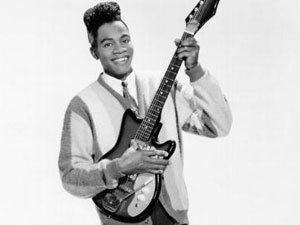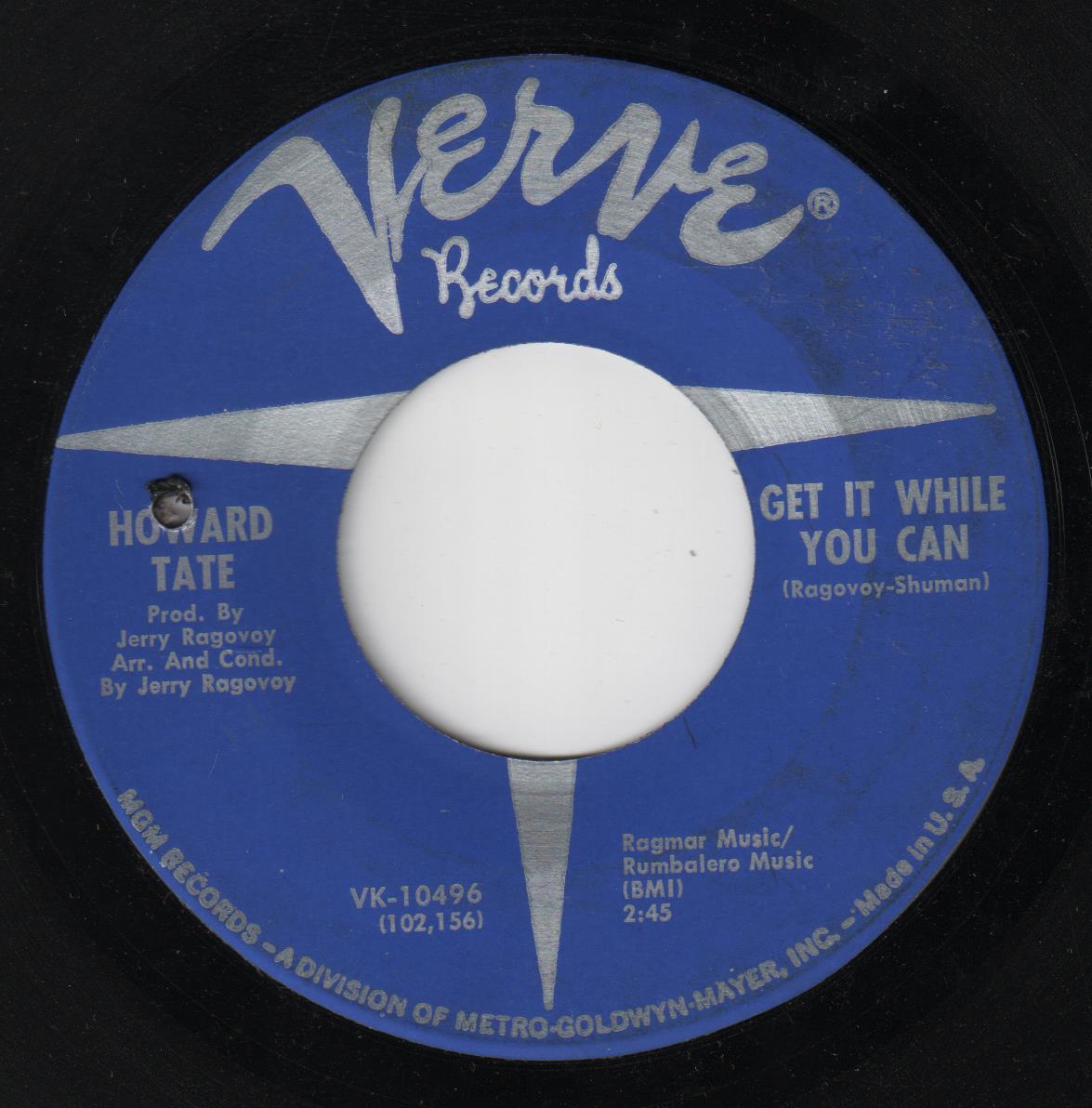HOWARD TATE

Howard Tate's best-known songs were later popularized by the likes of B.B. King and Janis Joplin.
He was born in Elberton, Georgia, on August 13, 1938 or ‘39. (Sources vary.) The Tate family moved to Philadelphia in the early ‘40s. As a teenager, Howard sang gospel with a group that included another future soul singer, Garnet Mimms (“Cry Baby,” 1963). They also sang Rhythm & Blues as the Gainors, recording for the Mercury and Cameo labels. Tate later joined the touring band of keyboardist Bill Doggett (“Honky Tonk,” 1956).
Through Mimms, Tate met producer Jerry Ragovoy, who got him signed to Verve Records. Together, they created a string of top-notch soul-blues numbers, including “Ain’t Nobody Home” (covered by B.B. King) and “Get It While You Can” (covered by Janis Joplin). The latter became the title cut of Tate’s 1967 debut LP. It also prompted Jerry Wexler of Atlantic Records to phone Ragovoy from Muscle Shoals, Alabama, to say, “Rags! I’m with all the cats in the studio and we just wanted to let you know—your Howard Tate record is the Bible down here!”
In 1970, Lloyd Price (“Lawdy Miss Clawdy,” “Stagger Lee,” “Personality”) and Johnny Nash (“Hold Me Tight,” “I Can See Clearly Now”) co-produced his second album, Howard Tate’s Reaction. A 2005 online review stated, “Tate's voice is still front and center, and his trademark falsetto swoops are well represented, but the overall effect is nowhere close to his work with Ragovoy. … Its strengths still outweigh its weaknesses, and with Tate, those strengths are substantial. Get his other stuff first, then get this one.”
In 1972, Tate reunited with Jerry Ragovoy for the singer’s self-titled third LP (released on Atlantic). It included a cover of Bob Dylan’s “Girl From the North Country” and the Robbie Robertson/Levon Helm song, “Jemima Surrender.”
By 1974, Tate was on Epic Records, for whom he recorded the non-chart single, “Ain’t Got Nobody To Give It To.” By the late ‘70s, he had retired from music and went to work in the securities industry. Tate developed a drug habit following the death of his 13-year-old daughter in a house fire. He ultimately ended up in a homeless shelter. But by the mid ‘90s, Tate had cleaned himself up. He became a preacher and counseled drug addicts and the mentally ill.
In 1995, PolyGram released a compilation of Tate’s Verve material. However, Tate himself was unaware of the CD—or of the international cult following his music had achieved—until 2001. That was when disc jockey Phil Casden bumped into Tate in a supermarket and immediately recognized him. At Casden’s urging, Tate revived his singing career. In New Orleans that spring, he gave his first live performance in over twenty years.
Tate subsequently hooked back up with Jerry Ragovoy, who produced his 2003 album, Rediscovered. Along with a re-recording of “Get It While You Can,” it included songs written by Elvis Costello and Prince. In 2006, Shout! Factory released Howard Tate Live, recorded in Denmark two years earlier. The same year, under the auspices of producer/arranger/songwriter Steve Weisberg, he recorded A Portrait of Howard. It featured compositions by Nick Lowe, Randy Newman, Lou Reed, and Carla Bley, as well as songs co-written by Tate and Weisberg themselves. In Nashville, he recorded Blue Day, which came out in 2008. Tate also performed at the Blue Heaven Studios for a vinyl-only 2010 live recording.
Howard Tate died on December 2, 2011, of complications from both multiple myeloma and leukemia.
Rock critic Dave Marsh included "Ain't Nobody Home" in his 1989 book, The Heart of Rock and Soul: The 1001 Greatest Singles Ever Made.
Charted singles:
“Ain’t Nobody Home” (1966) R&B #12, Pop #63
“Look at Granny Run, Run” (1966) R&B #12, Pop #67
“Get It While You Can” (1967) Pop #134
“Baby, I Love You” (1967) R&B #40
“Stop” (1968) R&B #15, Pop #76
“These Are the Things That Make Me Know You’re Gone” (1969) R&B #28, Pop #120
“My Soul’s Got a Hole in It” (1970) R&B #31, Pop #100

